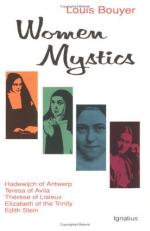|
This section contains 8,304 words (approx. 28 pages at 300 words per page) |

|
SOURCE: Duclow, Donald F. “The Hungers of Hadewijch and Eckhart.” Journal of Religion 80, no. 3 (July 2000): 421-41.
In the following essay, Duclow highlights mystical symbolism associated with eating and hunger in the works of Hadewijch and Meister Eckhart.
“During these last decades the interest in professional fasting has markedly diminished. It used to pay very well to stage such great performances, … but today that is quite impossible.”1 So begins Kafka's story “The Hunger Artist,” featuring the fictional last of a starving breed. Yet as Kafka and his artist knew, with changing tastes, “fasting would surely come into fashion again at some future date.”2 That date arrived some time ago in academe—and nowhere more vigorously than in the study of medieval women's spirituality.
Caroline Bynum's landmark study Holy Feast and Holy Fast considers fasting and hunger within the broader context of the religious and gendered meanings of food and...
|
This section contains 8,304 words (approx. 28 pages at 300 words per page) |

|


